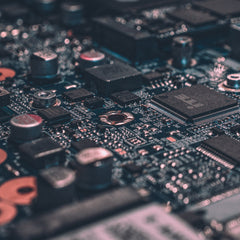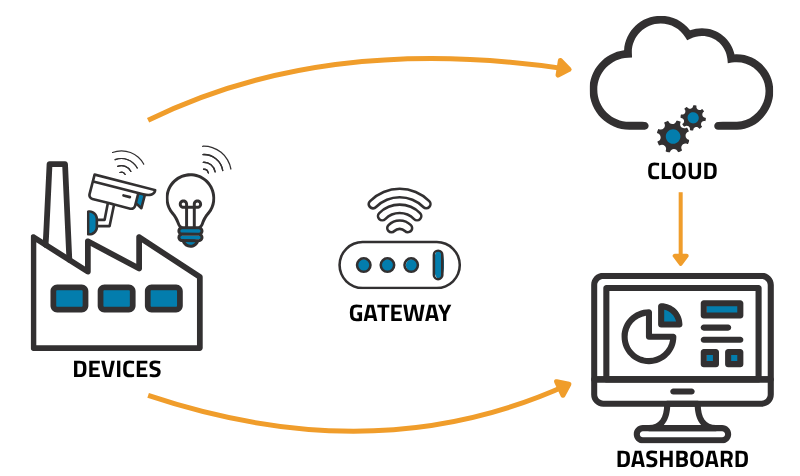End-to-end IoT refers to the full chain of connected technologies that move data from physical devices through processing layers and into cloud-based software systems. This approach brings all critical components like hardware, connectivity, data handling, analytics, and user interfaces under one coordinated framework.
When each layer is designed to work as part of a cohesive whole, businesses gain more control over performance, security, and scalability. Fully integrated end-to-end IoT solutions simplify development, reduce integration overhead, and make it easier to maintain and scale connected systems over time.
This post outlines the core components of end-to-end IoT, how they improve system reliability, and why integrated design is becoming a priority for companies deploying connected products at scale.
Seamless Integration from Device to Cloud
In a well-structured IoT system, data flows from connected devices to the cloud without interruption. Each part of the pipeline, such as hardware, communication protocols, gateways, and cloud interfaces needs to work together to maintain accuracy and speed. When components are poorly integrated, it often results in latency, data loss, or compatibility problems that limit the effectiveness of the solution.
End-to-end IoT platforms reduce these issues by aligning the entire system under one architecture. They streamline how data is collected and transmitted across the stack. This consistency allows teams to respond to information in real time and reduces the need for custom workarounds across disconnected technologies.
A reliable device-to-cloud connection improves efficiency, simplifies system maintenance, and supports scalability. Whether you’re deploying smart energy systems, industrial automation tools, or logistics tracking, consistent integration is essential to performance.
Securing IoT Ecosystems with End-to-End Architecture
Security often breaks down at the seams when different vendors, platforms, or protocols fail to enforce consistent protections across the system. End-to-end IoT solutions reduce this risk by applying a unified security model from the edge to the cloud.
When devices, gateways, and cloud services are all designed to work within the same ecosystem, it becomes easier to enforce encryption standards, manage identity, and maintain secure communication channels. This consistency also supports secure firmware updates, device authentication, and real-time monitoring for threats.
By controlling more of the stack, end-to-end IoT platforms offer a stronger foundation for protecting sensitive data, reducing attack surfaces, and meeting compliance requirements. For any organization managing large fleets of devices, this kind of built-in security is critical to long-term success.
Enhancing Scalability and Reliability with Fully Integrated Solutions
IoT deployments often start small, but they rarely stay that way. What works for a single site or a limited pilot can quickly become unmanageable when scaled across hundreds or thousands of devices. Without a unified architecture, each added device increases the complexity of updates, monitoring, and data synchronization.
Fully integrated IoT solutions are designed to support that growth. By standardizing device management, communication protocols, and data pipelines from the start, these systems reduce the friction that typically comes with scaling.
This consistency improves reliability as well. When all components from sensors to cloud dashboards follow the same operational model, there's less risk of failure due to version conflicts, unsupported configurations, or fragmented monitoring. Teams can update firmware, push new features, and manage infrastructure at scale without building custom tools for each layer.
Scalable systems are not just about handling more devices. They’re about doing so in a way that preserves performance, security, and maintainability.
Final Thoughts on End-to-End IoT
By aligning devices, data flows, cloud services, and security practices under a single architecture, businesses gain the visibility and control needed to operate at scale without sacrificing reliability.
Integrated platforms reduce the risks associated with fragmented ecosystems and simplify the deployment of complex IoT networks. From device provisioning to data analysis, every part of the system works together to support long-term performance and growth.
If you're planning a new IoT product or looking to improve an existing deployment, consider how a unified architecture could reduce complexity and strengthen your outcomes. Explore Grid Connect’s custom IoT solutions to see how we help companies build connected products that are secure, reliable, and ready to scale.







